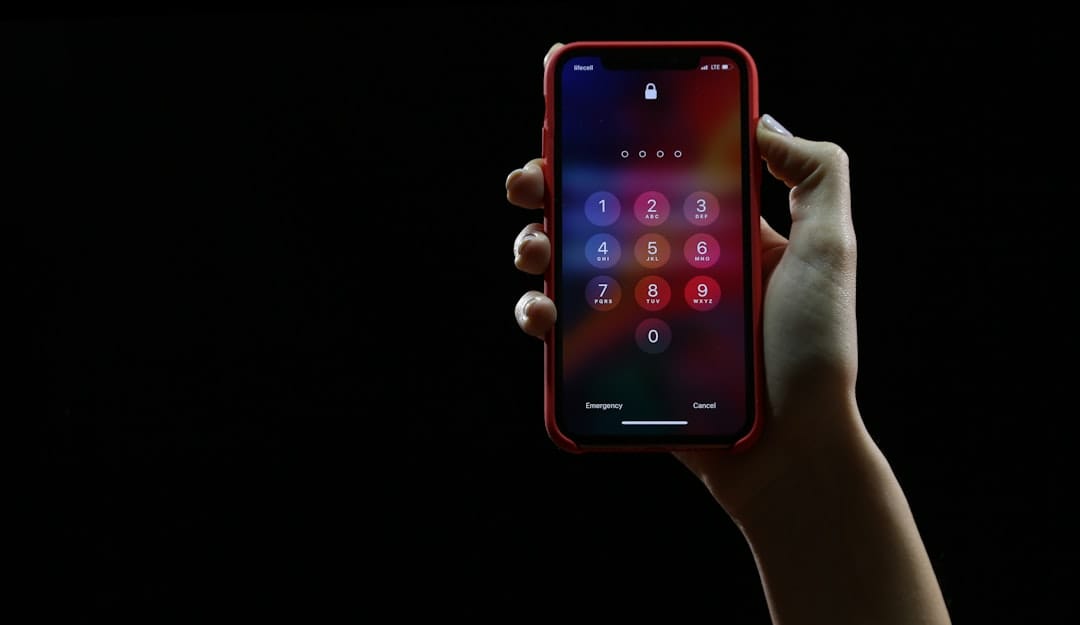Brute force dictionary attacks are a common method used by hackers to gain unauthorized access to a system or an account. This type of attack involves trying every possible combination of words or characters in a pre-existing dictionary to crack a password. The dictionary used in these attacks can include commonly used passwords, words from the dictionary, and variations of these words with numbers and special characters.
Hackers use automated software to rapidly input these combinations until they find the correct password. To protect against brute force dictionary attacks, it is important to understand how they work and the potential risks they pose. These attacks can be highly effective if the targeted account has a weak or easily guessable password.
Once the hacker gains access, they can steal sensitive information, compromise the security of the system, or carry out malicious activities. Therefore, it is crucial for individuals and organizations to implement strong password policies and additional security measures to mitigate the risk of brute force dictionary attacks. Brute force dictionary attacks can be detrimental to the security of any system or account.
By understanding how these attacks work and the potential consequences, individuals and organizations can take proactive steps to protect themselves from such threats. This includes creating strong passwords, implementing multi-factor authentication, limiting login attempts, using CAPTCHA and reCAPTCHA, and monitoring and analyzing login attempts. By taking these measures, the risk of falling victim to brute force dictionary attacks can be significantly reduced.
Key Takeaways
- Brute force dictionary attacks involve trying every possible combination of words and characters to crack passwords.
- Creating strong passwords with a mix of upper and lower case letters, numbers, and special characters can help prevent brute force attacks.
- Implementing multi-factor authentication adds an extra layer of security by requiring additional verification beyond just a password.
- Limiting login attempts can prevent attackers from repeatedly trying different passwords to gain access to an account.
- Using CAPTCHA and reCAPTCHA can help differentiate between human users and automated bots, reducing the risk of brute force attacks.
Creating Strong Passwords
Password Length and Complexity
Additionally, the password should be at least 12 characters long to enhance its strength. This will make it more difficult for hackers to crack using automated tools.
Avoiding Guessable Information
Another important aspect of creating strong passwords is to avoid using easily guessable information such as names, birthdates, or common words. Hackers often use automated tools to guess passwords based on personal information or commonly used words. Therefore, it is crucial to choose a password that is unrelated to personal details and is not easily predictable.
Password Management and Best Practices
Furthermore, it is advisable to use different passwords for different accounts to prevent a single breach from compromising multiple accounts. Using a password manager can help individuals and organizations generate and store strong, unique passwords for each account securely. By following best practices for password creation, individuals and organizations can significantly reduce the risk of unauthorized access to their accounts and systems.
Implementing Multi-factor Authentication
Multi-factor authentication (MFA) is a powerful security measure that adds an extra layer of protection against brute force dictionary attacks and other unauthorized access attempts. MFA requires users to provide two or more forms of verification before gaining access to an account or system. This typically includes something the user knows (such as a password), something the user has (such as a mobile device for receiving a verification code), and something the user is (such as a fingerprint or facial recognition).
By implementing MFA, even if a hacker manages to obtain a user’s password through a brute force dictionary attack, they would still need the additional form of verification to gain access. This significantly reduces the likelihood of unauthorized access and enhances the overall security of the account or system. MFA can be implemented across various platforms and services, including email accounts, social media accounts, online banking, and enterprise systems.
Many organizations are increasingly adopting MFA as a standard security practice to protect sensitive data and prevent unauthorized access. In summary, implementing multi-factor authentication is an effective way to bolster security and protect against brute force dictionary attacks. By requiring multiple forms of verification, MFA significantly reduces the risk of unauthorized access and enhances overall cybersecurity.
Limiting Login Attempts
| Metrics | Value |
|---|---|
| Number of login attempts allowed | 3 |
| Lockout duration | 10 minutes |
| Notification on lockout | Enabled |
Limiting login attempts is an important security measure that can help protect against brute force dictionary attacks. By setting a limit on the number of login attempts allowed within a certain time frame, organizations can prevent hackers from repeatedly trying different password combinations until they gain access. When a user exceeds the specified number of login attempts, the system can temporarily lock the account or require additional verification before allowing further login attempts.
This helps to thwart automated tools used in brute force attacks and makes it more difficult for hackers to crack passwords through trial and error. By implementing login attempt limitations, organizations can significantly reduce the risk of unauthorized access and enhance the overall security of their systems and accounts. This measure works in conjunction with other security practices such as creating strong passwords and implementing multi-factor authentication to provide comprehensive protection against cyber threats.
In conclusion, limiting login attempts is an effective way to mitigate the risk of brute force dictionary attacks and enhance overall cybersecurity. By setting restrictions on the number of login attempts allowed, organizations can strengthen their defenses against unauthorized access attempts.
Using CAPTCHA and reCAPTCHA
CAPTCHA (Completely Automated Public Turing test to tell Computers and Humans Apart) and reCAPTCHA are widely used security measures that help protect against brute force dictionary attacks and other automated threats. These tools present users with challenges that are easy for humans to solve but difficult for automated bots to bypass. CAPTCHA typically requires users to complete tasks such as identifying distorted letters or numbers, selecting specific images from a grid, or solving simple puzzles.
These challenges help verify that the user is a human rather than an automated script attempting to gain unauthorized access. reCAPTCHA is an advanced version of CAPTCHA developed by Google that uses machine learning algorithms to present more sophisticated challenges to users. These challenges may include identifying objects in images or solving more complex puzzles that are difficult for automated bots to solve.
By using CAPTCHA and reCAPTCHA, organizations can effectively prevent automated tools from carrying out brute force dictionary attacks and other malicious activities. These tools serve as an additional layer of security that complements other measures such as creating strong passwords, implementing multi-factor authentication, and limiting login attempts. In summary, using CAPTCHA and reCAPTCHA is an effective way to protect against brute force dictionary attacks and enhance overall cybersecurity.
By presenting users with challenges that are difficult for automated bots to bypass, these tools help verify the authenticity of users and prevent unauthorized access attempts.
Monitoring and Analyzing Login Attempts

Monitoring and analyzing login attempts is an essential practice for detecting and preventing brute force dictionary attacks. By keeping track of login activities, organizations can identify suspicious patterns or multiple failed login attempts that may indicate an ongoing attack. Security teams can use monitoring tools to track login attempts in real-time and analyze historical data to identify potential security threats.
By monitoring for unusual login patterns such as multiple failed attempts from the same IP address or unusual login times, organizations can proactively respond to potential threats before they escalate. Analyzing login attempts also provides valuable insights into potential vulnerabilities in the system or account security. By identifying patterns of failed login attempts or unauthorized access, organizations can take proactive measures to strengthen their defenses and prevent future attacks.
In conclusion, monitoring and analyzing login attempts is a critical practice for detecting and preventing brute force dictionary attacks. By staying vigilant and analyzing login activities, organizations can proactively respond to potential threats and enhance their overall cybersecurity posture.
Educating Users about Cybersecurity Best Practices
Educating users about cybersecurity best practices is crucial for preventing brute force dictionary attacks and other cyber threats. Many security breaches occur due to human error or lack of awareness about potential risks. By providing comprehensive cybersecurity training and awareness programs, organizations can empower users to recognize potential threats and take proactive measures to protect themselves.
Cybersecurity education should cover topics such as creating strong passwords, recognizing phishing attempts, understanding the importance of multi-factor authentication, and practicing safe browsing habits. By equipping users with the knowledge and skills to identify potential threats and respond appropriately, organizations can significantly reduce the risk of falling victim to cyber attacks. Furthermore, ongoing cybersecurity education helps create a culture of security awareness within organizations.
When users are informed about best practices and understand their role in maintaining security, they are more likely to actively contribute to protecting against cyber threats. In summary, educating users about cybersecurity best practices is essential for preventing brute force dictionary attacks and enhancing overall cybersecurity. By providing comprehensive training and awareness programs, organizations can empower users to recognize potential threats and take proactive measures to protect themselves from cyber threats.
If you’re interested in learning more about the challenges and opportunities in the metaverse, you should check out the article Challenges and Opportunities in the Metaverse: Ethical Considerations. This article discusses the ethical considerations that come with the development of the metaverse and how it impacts the real world. It’s a fascinating read that delves into the complexities of the hybrid reality and the implications it has on society.
FAQs
What is a brute force dictionary attack?
A brute force dictionary attack is a type of cyber attack where an attacker systematically tries every possible combination of words or phrases in order to gain unauthorized access to a system or account.
How does a brute force dictionary attack work?
In a brute force dictionary attack, the attacker uses a list of commonly used passwords, known as a dictionary, to systematically try each password until the correct one is found. This method is often automated using software or scripts to speed up the process.
What is the difference between a brute force attack and a dictionary attack?
In a brute force attack, the attacker tries every possible combination of characters, while in a dictionary attack, the attacker uses a pre-existing list of words or phrases as potential passwords.
What are some ways to protect against brute force dictionary attacks?
To protect against brute force dictionary attacks, it is important to use strong, unique passwords for each account, implement account lockout policies, and use multi-factor authentication where possible. Additionally, regularly updating passwords and using password managers can also help mitigate the risk of a successful attack.
What are the potential consequences of a successful brute force dictionary attack?
If a brute force dictionary attack is successful, the attacker may gain unauthorized access to sensitive information, such as personal data, financial records, or proprietary business information. This can lead to identity theft, financial loss, and reputational damage for individuals and organizations.











Leave a Reply